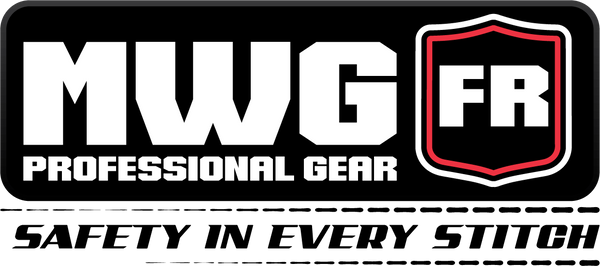
When the temperature drops, staying warm is about more than comfort. It is about safety. For those working long hours outdoors, exposure to cold weather can lead to frostbite, hypothermia, and loss of dexterity. These risks make every task more dangerous. The right FR layering system keeps you warm, dry, and protected without losing mobility or compliance.
Why Layering Matters
Layering is the most effective way to stay comfortable and safe in winter conditions. Each layer has a job: manage moisture, hold warmth, and block wind and cold. When combined, flame-resistant layers do more than keep you comfortable. They also increase your overall ATPV (Arc Thermal Performance Value), providing stronger protection against electric arcs, flash fires, and cold stress while meeting the safety standards your job demands.
A Layered Approach: The Science Behind Protection
The science behind FR clothing is simple. Each layer helps block and absorb heat energy before it reaches your skin. This protection is measured by ATPV, or Arc Thermal Performance Value.
ATPV represents how much thermal energy (cal/cm²) a fabric can resist before a second-degree burn would occur. A higher ATPV means greater fire and arc protection. But layering multiple FR garments changes everything. The air trapped between layers works as extra insulation, increasing your total ATPV rating and keeping you warmer at the same time.
At MWG Apparel, every fabric is third-party tested by AITEX, and we go further by testing entire FR clothing combinations. These layered tests reveal the true performance values of our PPE systems in real working environments, showing how protection multiplies when you wear MWG pieces together.
To learn how our layered systems perform and find your best cold-weather combination,
👉 Visit our Layering Guide for detailed ATPV results and real protection data.
Step 1: Start with a Solid FR Base
Your base layer regulates body temperature and keeps you dry. It should fit close to your skin to wick away sweat before it cools. MWG FLEXSAFE™ FR Long-Sleeve and MWG FLEXSAFE™ FR Long John FR Base Layers are built with inherently flame-resistant fabric that stretches, breathes, and moves with you. These FR Base Layers provide everyday comfort while protecting against flash fire and arc hazards right at your core.
Step 2: Add Warmth with a Mid Layer
The mid layer traps heat and adds insulation between your base and outerwear. It keeps your body’s warmth from escaping while maintaining flexibility and breathability. MWG COMFORT WEAVE™ Men's FR Uniform Shirt and MWG COTTON COMFORT™ FR Long-Sleeve FR Shirts are dependable mid layers that help balance warmth and mobility. Both are moisture-wicking, durable, and certified fire-resistant PPE built to handle long shifts in any environment.
Step 3: Lock in Warmth with the Right Outer Layer
Your outer layer takes the hit from wind, snow, and freezing rain. It seals in heat while protecting you from the elements. MWG STORMSHIELD™ FR Parka and FR Bomber Shells are fully windproof and waterproof, keeping your body dry and warm even in harsh storms.
For the ultimate system, our FR Cooler Jacket is designed to zip directly into the STORMSHIELD™ Parka and Bomber Shells, creating the warmest flame-resistant jacket combination ever built. These warm FR Jackets are tested for comfort, protection, and performance in extreme cold, it is built to outlast any season.
For full-body coverage, our FR Insulated Overall and FR Insulated Coverall offer superior cold protection with an impressive 49 cal CAT 4 rating. These outerwear pieces combine insulation, durability, and arc-rated protection to help you stay productive and safe no matter the weather.
Step 4: Protect What Matters Most
Accessories matter just as much as outerwear. Flame-resistant toques, balaclavas, and gloves help prevent heat loss from your head and hands, which lose warmth the fastest. MWG FR Toque (CAT 3, ATPV 38 cal) and TRANSMISSION™ FR Balaclava (CAT 2, ATPV 9 cal) fit comfortably under helmets and hoods while maintaining the protection you need to face any shift.
The Risks of Cold Exposure
Cold exposure can cause more than discomfort. It affects focus, coordination, and safety. Workers facing freezing temperatures without proper FR protection risk frostbite, slowed reaction times, and reduced strength. Wearing non-FR layers under FR outerwear is also dangerous since synthetic fabrics can melt or ignite under heat. A proper FR layering system with a really warm FR Winter Jacket eliminates that risk, combining thermal insulation and flame resistance from the inside out.
Built for Safety. Designed for Comfort.
Every MWG garment is inherently flame-resistant, third-party tested, and built for performance in the real world. Whether you are climbing poles, repairing lines, or battling freezing winds, our FR clothing provides reliable warmth, comfort, and safety every step of the way.
Layer smart. Stay warm. Work safe.
👉 Explore our full Winter Collection here.


